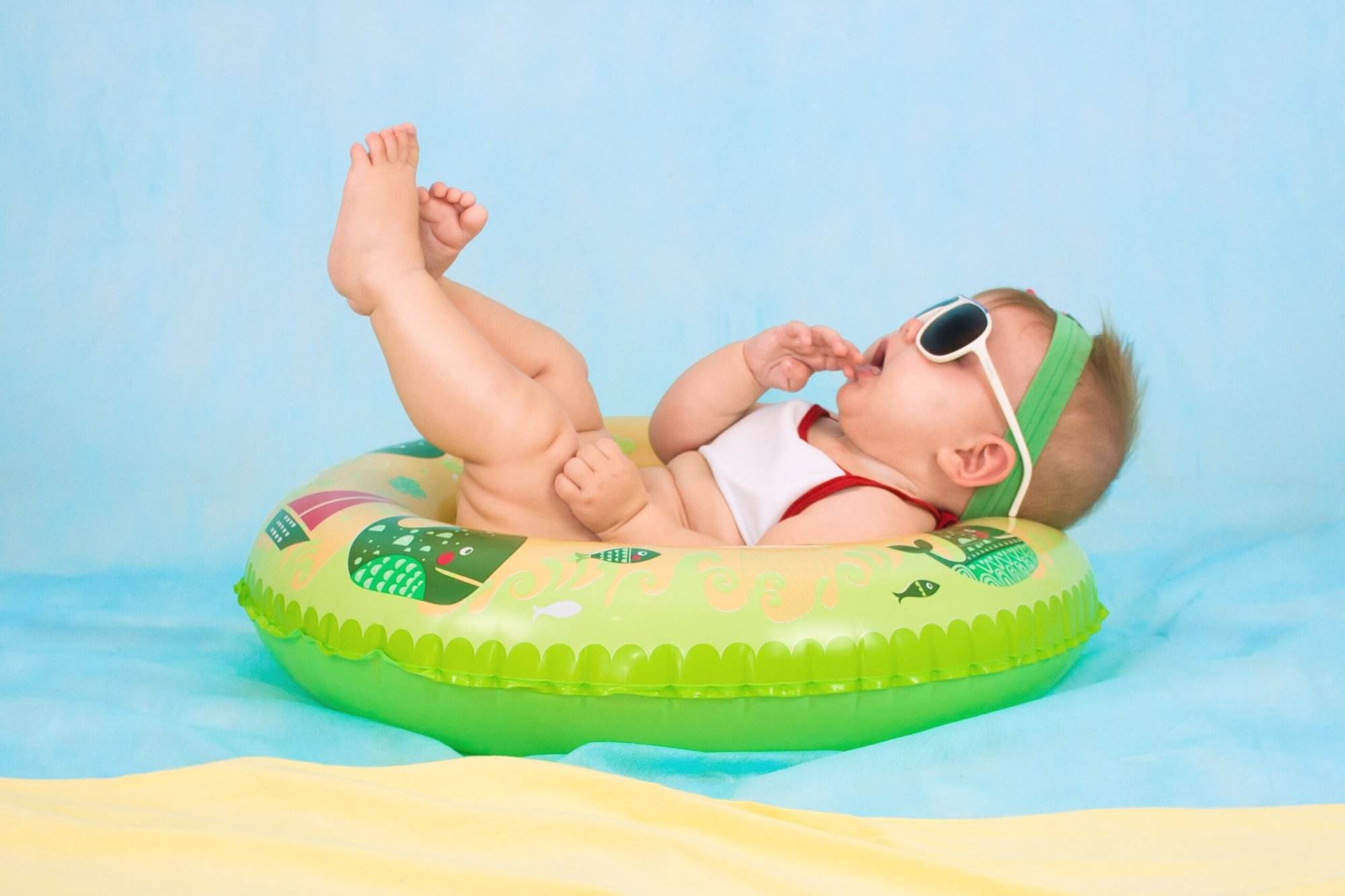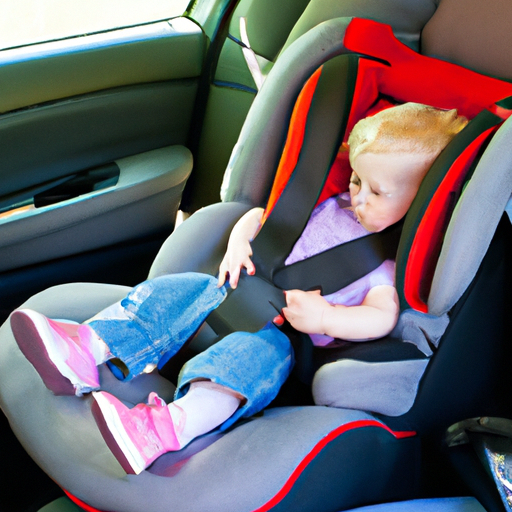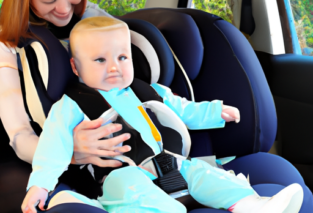Picture this: you’re a loving parent, eagerly watching your bundle of joy grow and reach new milestones. Time flies by, and before you know it, your once tiny infant starts to fill out their clothes and gain weight. As a responsible parent, you begin to wonder, when is a baby too big for an infant car seat? In this article, we will explore the factors that determine when it’s time to transition your little one to a different car seat, ensuring their safety and comfort on every journey.
Determining the Right Size
Understanding the Weight Limit
When it comes to determining the right size for your baby’s car seat, the weight limit is an important factor to consider. Infant car seats typically have a weight limit of around 20 to 35 pounds, depending on the model. It’s crucial to adhere to these limits as they are set to ensure maximum safety for your child. Exceeding the weight limit can compromise the effectiveness of the car seat in the event of an accident. Therefore, it is vital to start exploring alternative options when your baby reaches the weight limit of their infant car seat.
Considering Height Restrictions
In addition to the weight limit, height restrictions are another essential aspect to consider when determining if your baby has outgrown their infant car seat. Most infant car seats have a height limit of around 28 to 32 inches. If your baby’s head is starting to reach the top of the seat, it may be an indication that they have become too tall for the infant car seat. It’s essential to keep an eye on your baby’s height as they grow, to ensure their safety while traveling in a car.
Signs It’s Time to Switch
Difficulty Buckling Up
One of the signs that indicate it’s time to switch your baby to a larger car seat is when it becomes increasingly difficult to buckle them up securely in their infant car seat. If you find yourself struggling to fasten the seatbelt, or if the straps are too tight on your baby, it may be a clear sign that they have outgrown their current car seat. Ensuring that your baby is properly secured in their car seat is crucial for their safety during car rides.
Exceeding Weight Limit
As mentioned earlier, exceeding the weight limit of the infant car seat is a definite indication that it’s time to switch to a larger seat. If your baby’s weight has surpassed the recommended limit for their current car seat, it’s essential to transition them to a suitable alternative promptly. Continuing to use a car seat that is not designed to accommodate their weight can jeopardize their safety in the event of a car accident.
Head Reaches Top of the Seat
When your baby’s head starts to reach the top of the infant car seat, it is a strong indication that they have outgrown the seat in terms of height. The infant car seat is specifically designed to provide optimal protection for a baby’s head, and once they have outgrown it in terms of height, it can no longer provide the necessary support and protection. It’s crucial to switch to a larger car seat that can accommodate your growing baby’s height to ensure their safety on the road.

Alternative Options
Convertible Car Seats
A popular alternative to infant car seats is a convertible car seat. Convertible car seats are designed to transition with your child as they grow, offering both rear-facing and forward-facing positions. This versatility allows you to keep your child in a rear-facing position for a more extended period, which is considered the safest option for young children. Convertible car seats generally have a higher weight and height limit than infant car seats, accommodating children up to 65 pounds or more.
All-in-One Car Seats
All-in-one car seats are another option to consider when your baby outgrows their infant car seat. These car seats are designed to be used from infancy to toddlerhood, and sometimes even beyond. They can typically be used in a rear-facing position, a forward-facing position, and eventually as a booster seat. All-in-one car seats offer convenience and cost-effectiveness since they eliminate the need to purchase multiple car seats as your child grows.
Booster Seats
Booster seats are suitable for older children who have outgrown their car seats but are not yet ready to use the regular seat belt system. They boost the child up to a height where the seatbelt can be properly positioned across their body. Booster seats are recommended for children who are at least four years old and weigh at least 40 pounds. It’s essential to ensure that the booster seat is correctly installed to provide optimal safety for your child.
Guidelines for Safe Transitioning
Following Manufacturer’s Recommendations
When transitioning to a larger car seat, it is crucial to carefully read and follow the manufacturer’s recommendations. Each car seat has specific guidelines for installation, usage, and weight/height limits. By adhering to these guidelines, you can ensure that your child is properly secured and safe during car rides. The instructions provided by the car seat manufacturer are essential for maintaining the seat’s integrity and effectiveness.
Properly Installing the New Seat
Proper installation of the new car seat is crucial to ensure your baby’s safety. Incorrect installation can compromise the seat’s performance and increase the risk of injury during a car accident. It’s recommended to carefully read the installation instructions provided by the car seat manufacturer and follow them step-by-step. Additionally, you can consult a certified child passenger safety technician to help you with the installation if you are unsure.
Securing the Baby Correctly
Securing your baby correctly in their new car seat is equally important as proper installation. Pay attention to the tightness of the straps and ensure that they fit snugly but comfortably. The chest clip should be positioned at armpit level, and there should be no slack in the straps. It is also crucial to double-check that the straps are not twisted and that the harness is securely buttoned. By following these guidelines, you can ensure that your child is properly secured in their new car seat and reduce the risk of injury.

Key Considerations
Keeping the Baby Rear-Facing
Experts recommend keeping your baby in a rear-facing position for as long as possible, ideally until they reach the maximum weight and height limit set by the car seat manufacturer. Rear-facing car seats provide the best protection for a baby’s head, neck, and spine in the event of a car accident. It’s important to remember that age is not the only determining factor for transitioning to a forward-facing seat. Your baby’s weight and height should also be taken into consideration to ensure optimal safety.
Considering the Baby’s Size and Age
Both the size and age of your baby should be considered when determining if they have outgrown their infant car seat. While weight and height limits are important, they should not be the sole deciding factors. It’s essential to also evaluate whether your baby has enough space to sit comfortably without feeling constrained or cramped. Observing their overall body proportions, as well as their ability to maintain good posture, can help you decide if it’s time for a larger car seat.
Budget and Lifestyle
It’s important to consider your budget and lifestyle when transitioning to a larger car seat. While convertible car seats and all-in-one car seats may initially seem more expensive than infant car seats, they offer long-term value as they can be used for a more extended period. Additionally, consider your lifestyle and the type of car you have. Some car seats may be more compatible with certain vehicles, so it’s worth researching and considering compatibility when making your decision.
Common Concerns
Impact of a Rear-Facing Car Seat on Leg Space
Many parents worry about the impact of a rear-facing car seat on their baby’s leg space. However, it’s important to know that children are incredibly flexible, and their legs can bend comfortably even when seated in a rear-facing position. In fact, rear-facing car seats are designed to offer optimal protection for a baby’s head, neck, and spine, and the position of the legs is accommodated within the seat. So, rest assured that your baby’s legs will be just fine in a rear-facing car seat.
Handling a Large Baby in a Car Seat
If you have a larger baby, you may have concerns about how they will fit in a car seat. However, it’s important to note that car seats are designed to accommodate different-sized infants and toddlers. There are car seat models available with wider seat bases and higher weight and height limits to cater to larger babies. By selecting a car seat that suits your baby’s size and weight, you can ensure that they are comfortable and properly secured during car rides.
Safety Risks of Using an Infant Car Seat Too Long
Using an infant car seat beyond its recommended weight and height limits poses safety risks for your baby. The infant car seat is specifically designed to provide optimal protection up to a certain weight and height. By exceeding these limits, you compromise the seat’s effectiveness in a car accident. It’s crucial to transition to a larger car seat once your baby has outgrown their infant car seat to ensure their continued safety on the road.

Additional Safety Measures
Using Seat Belt Extenders
Seat belt extenders can be a useful tool to ensure a proper fit of the seatbelt across your baby’s body. In some cases, the seatbelt may not be long enough to accommodate the car seat or fit snugly. Seat belt extenders can help bridge the gap and ensure that the seatbelt is properly secured. It’s important to note that not all car seat manufacturers allow the use of seat belt extenders, so it’s essential to check the guidelines provided by the car seat manufacturer before using one.
Avoiding Bulky Outerwear
Bulky outerwear can prevent the car seat straps from fitting correctly and tightly around your baby. It’s important to remove bulky jackets or snowsuits before securing your baby in the car seat. Instead, opt for lightweight blankets or use the car’s heating system to keep your baby warm during colder weather. By avoiding bulky outerwear, you can ensure that the car seat straps are snug and secure for maximum safety.
Checking for Proper Harness Tightness
Regularly checking the tightness of the car seat harness is essential to ensure your baby’s safety. Over time, the harness straps may loosen due to regular use or movement. Before each car ride, take a moment to check the tightness of the harness and ensure that there is no slack. The straps should fit snugly but comfortably against your baby’s body, allowing for minimal movement in the event of an accident. Adjust the straps as necessary to maintain the correct tightness.
Expert Opinions
American Academy of Pediatrics
According to the American Academy of Pediatrics (AAP), it is recommended to keep your child in a rear-facing car seat until at least the age of two, or until they reach the maximum weight and height limit set by the car seat manufacturer. The AAP emphasizes the importance of rear-facing car seats as they offer superior protection for a child’s head, neck, and spine. The organization advises parents to transition to a forward-facing car seat only when their child has outgrown the rear-facing position based on the car seat manufacturer’s guidelines.
National Highway Traffic Safety Administration
The National Highway Traffic Safety Administration (NHTSA) also recommends keeping children in a rear-facing car seat for as long as possible, up to the car seat’s weight and height limits. The NHTSA stresses that rear-facing car seats are the safest option for young children, as they provide maximum protection in the event of a car accident. The organization encourages parents to transition to a forward-facing car seat only when the child has met the specified weight and height requirements of the car seat.

Frequently Asked Questions
What if my baby’s legs are getting cramped?
If your baby’s legs seem cramped in a rear-facing car seat, it’s important to remember that children are flexible and can bend their legs comfortably. Rear-facing car seats are specifically designed to accommodate a baby’s leg positioning while providing optimal head, neck, and spine protection. As long as your baby is within the weight and height limits of the car seat, their legs being bent or touching the seat is not a cause for concern.
Can I use a car seat longer if my baby is below the weight limit?
It is not recommended to use a car seat longer than the weight and height limits specified by the car seat manufacturer. These limits are set to ensure maximum safety for your child, and exceeding them can compromise the effectiveness of the car seat in the event of an accident. Transitioning to a larger car seat once your baby outgrows their current seat is the best way to ensure their continued safety while traveling in a car.
Are there different regulations for different countries?
Yes, regulations regarding car seat requirements may vary between countries. It’s important to familiarize yourself with the specific regulations and guidelines in your country of residence. Consult your local traffic safety authority or a certified child passenger safety technician to ensure you are in compliance with the applicable regulations.
Conclusion
Determining when a baby is too big for an infant car seat involves considering factors such as weight, height, and signs of outgrowing the seat. It’s crucial to switch to a larger car seat when necessary, ensuring that your baby is safe and secure during car rides. Convertible car seats, all-in-one car seats, and booster seats are alternative options that cater to your child’s growing needs. Following manufacturer’s recommendations, properly installing the new seat, and securely fastening your baby are essential for safe transitioning. Keep in mind the benefits of rear-facing car seats, the baby’s size and age, and budget and lifestyle considerations when making the switch. Address common concerns, adopt additional safety measures, and take note of expert opinions. Lastly, familiarize yourself with frequently asked questions and adhere to the regulations in your country. By taking these factors into account, you can ensure that your baby travels safely and comfortably in their appropriate car seat.






